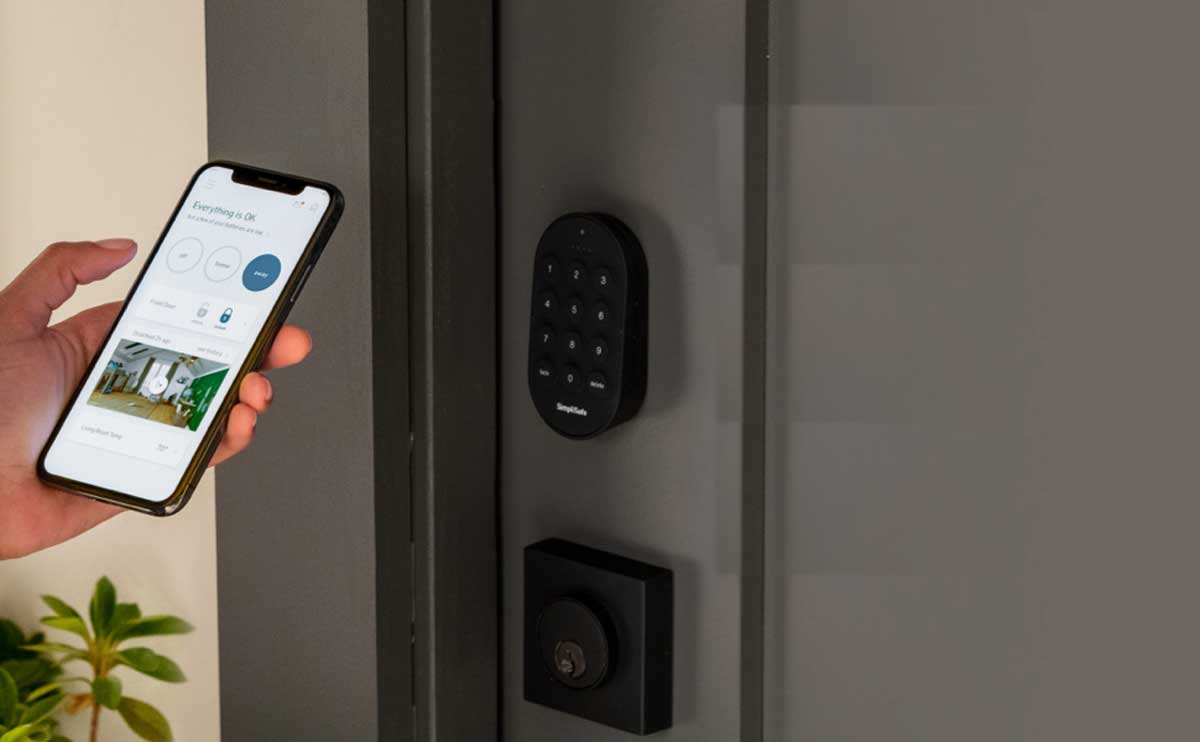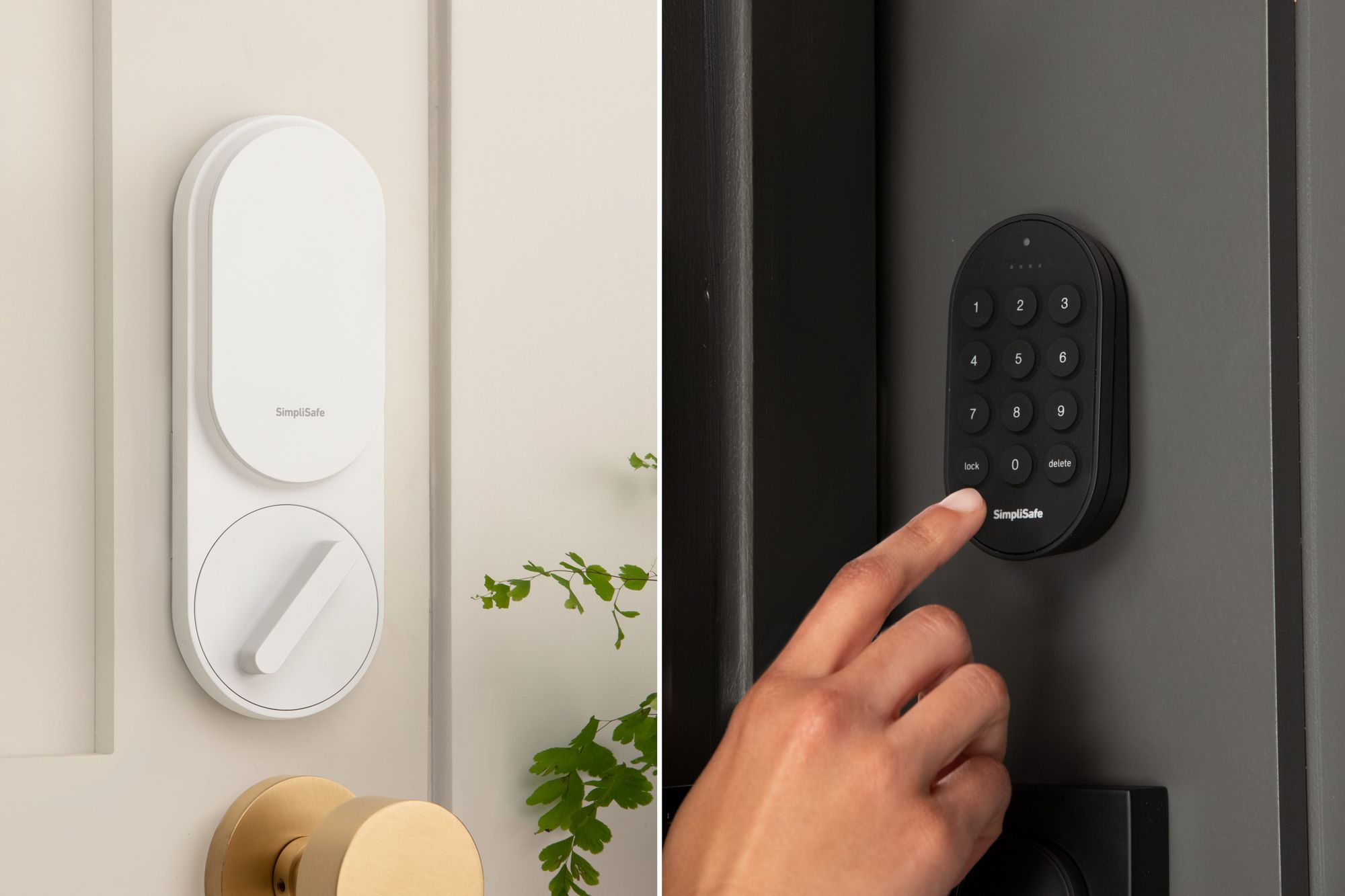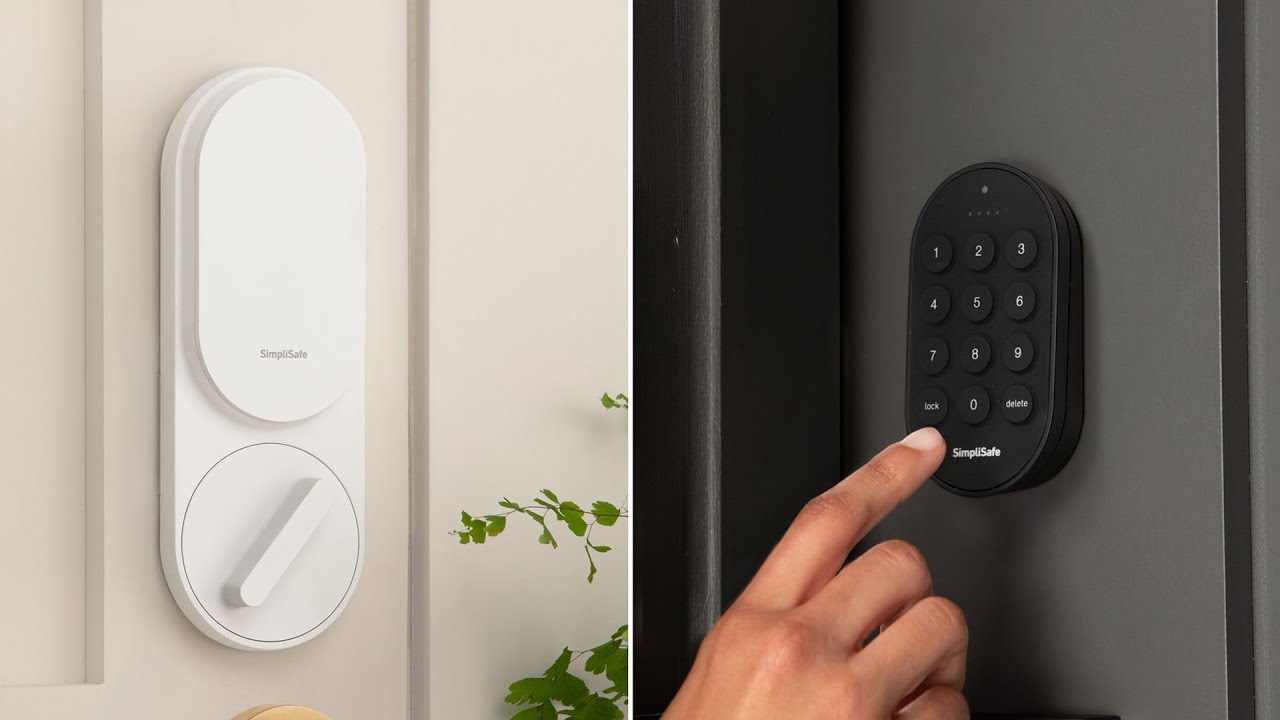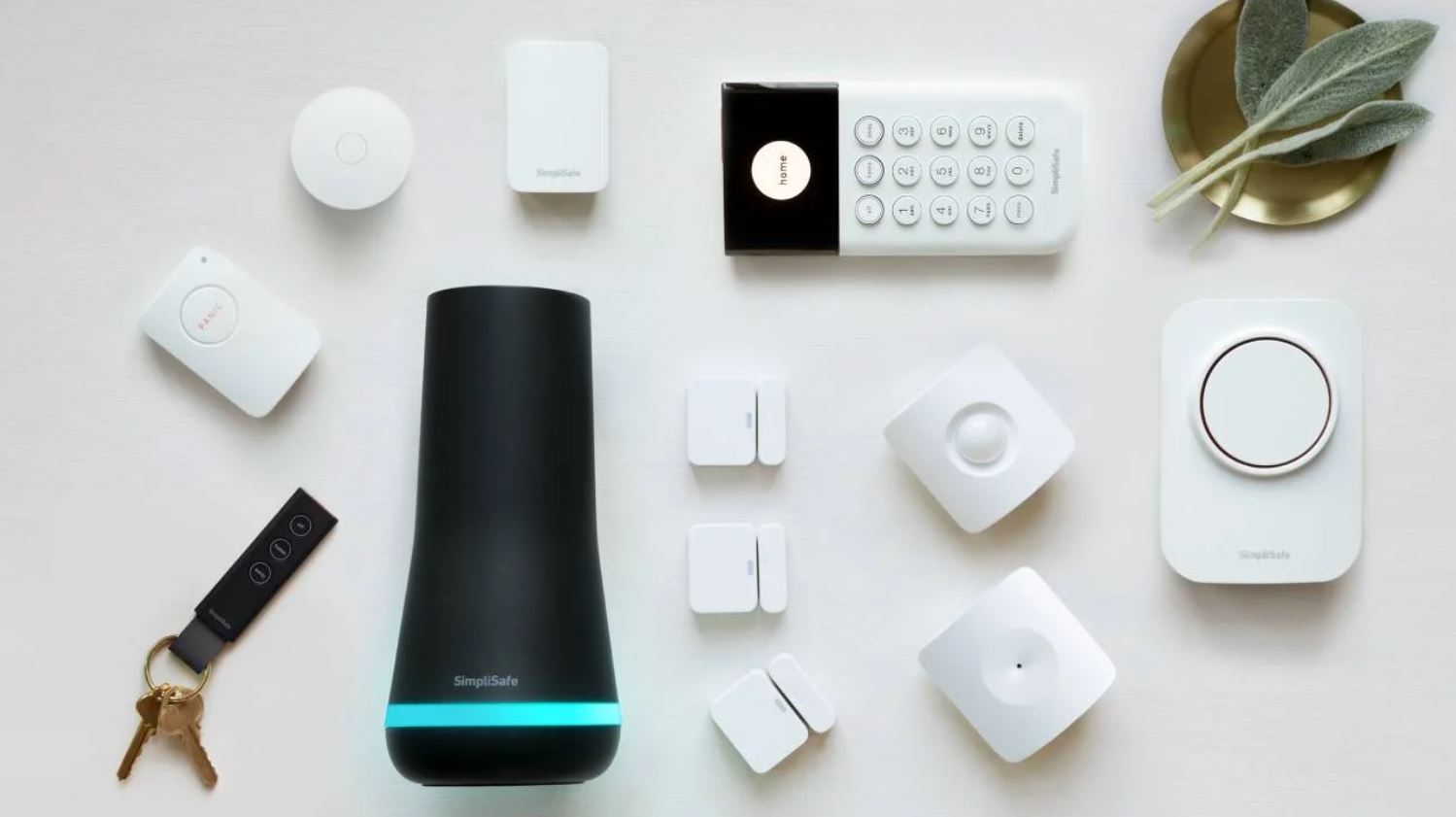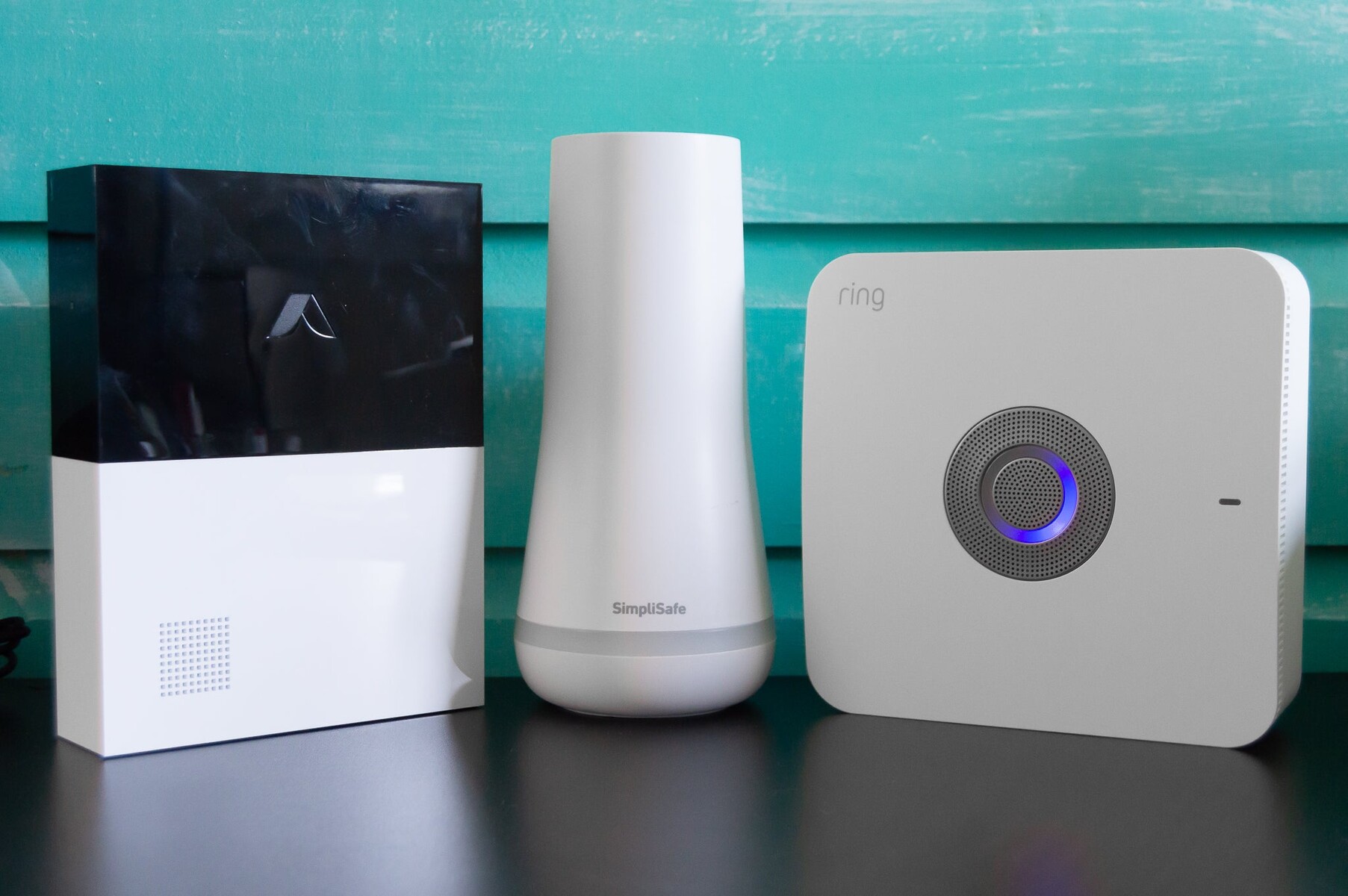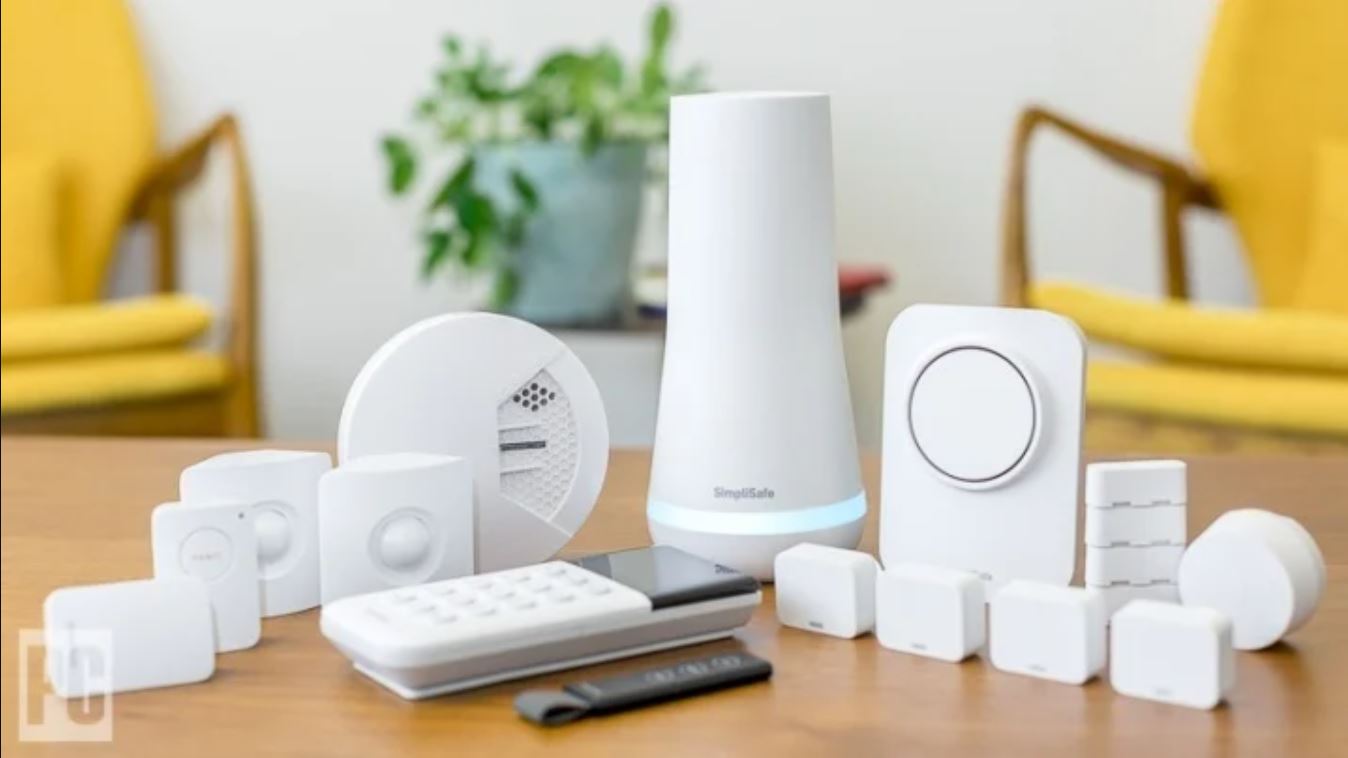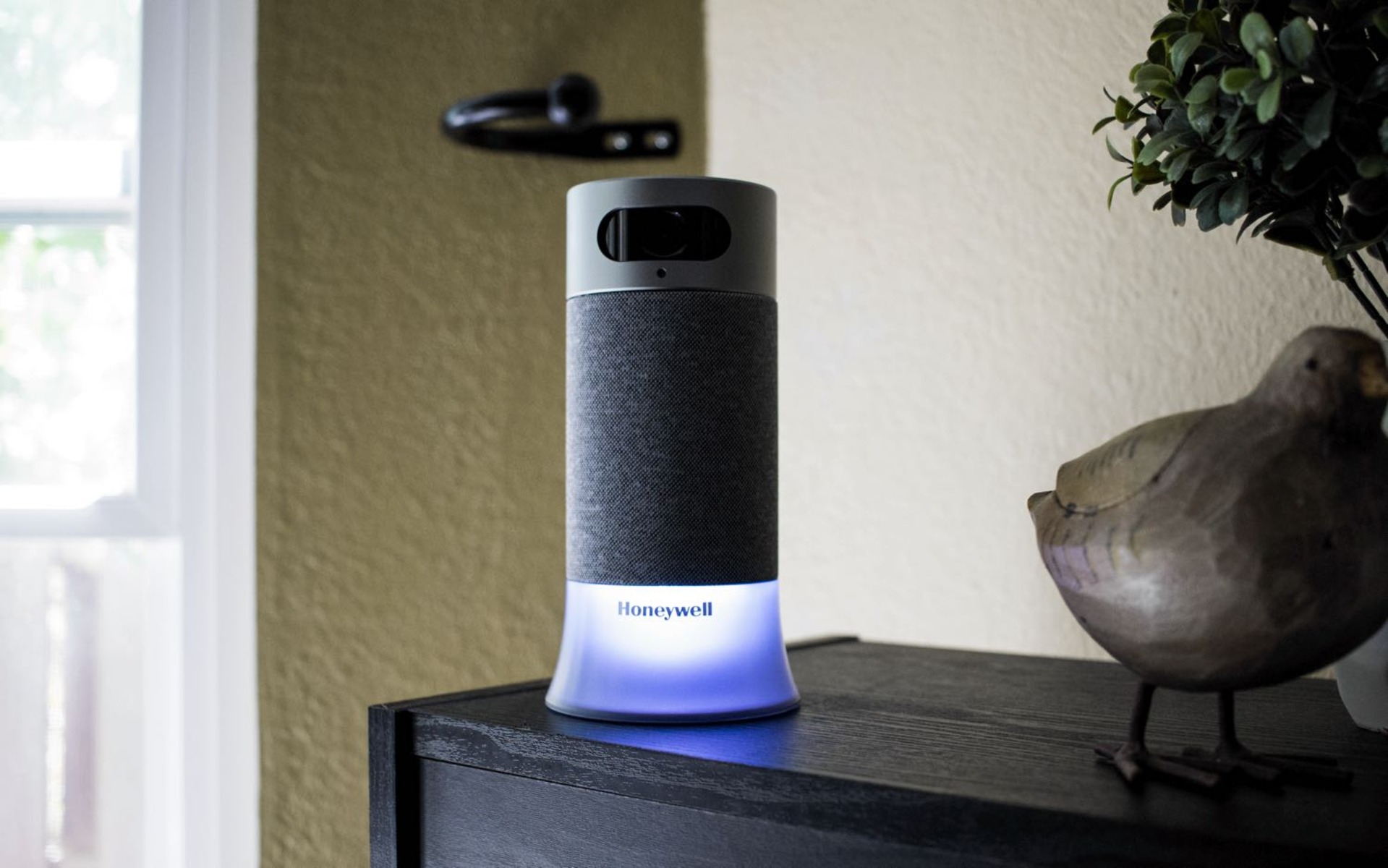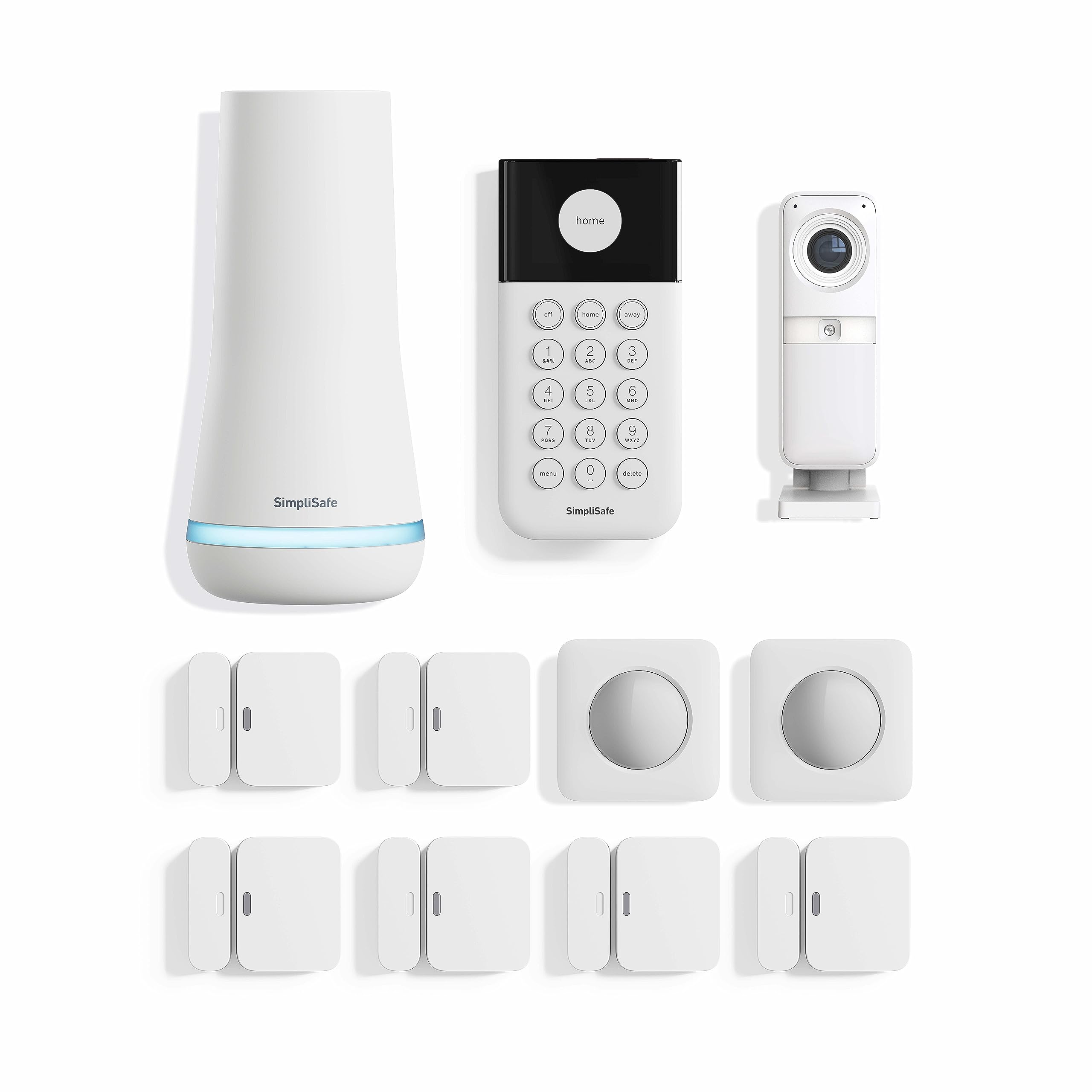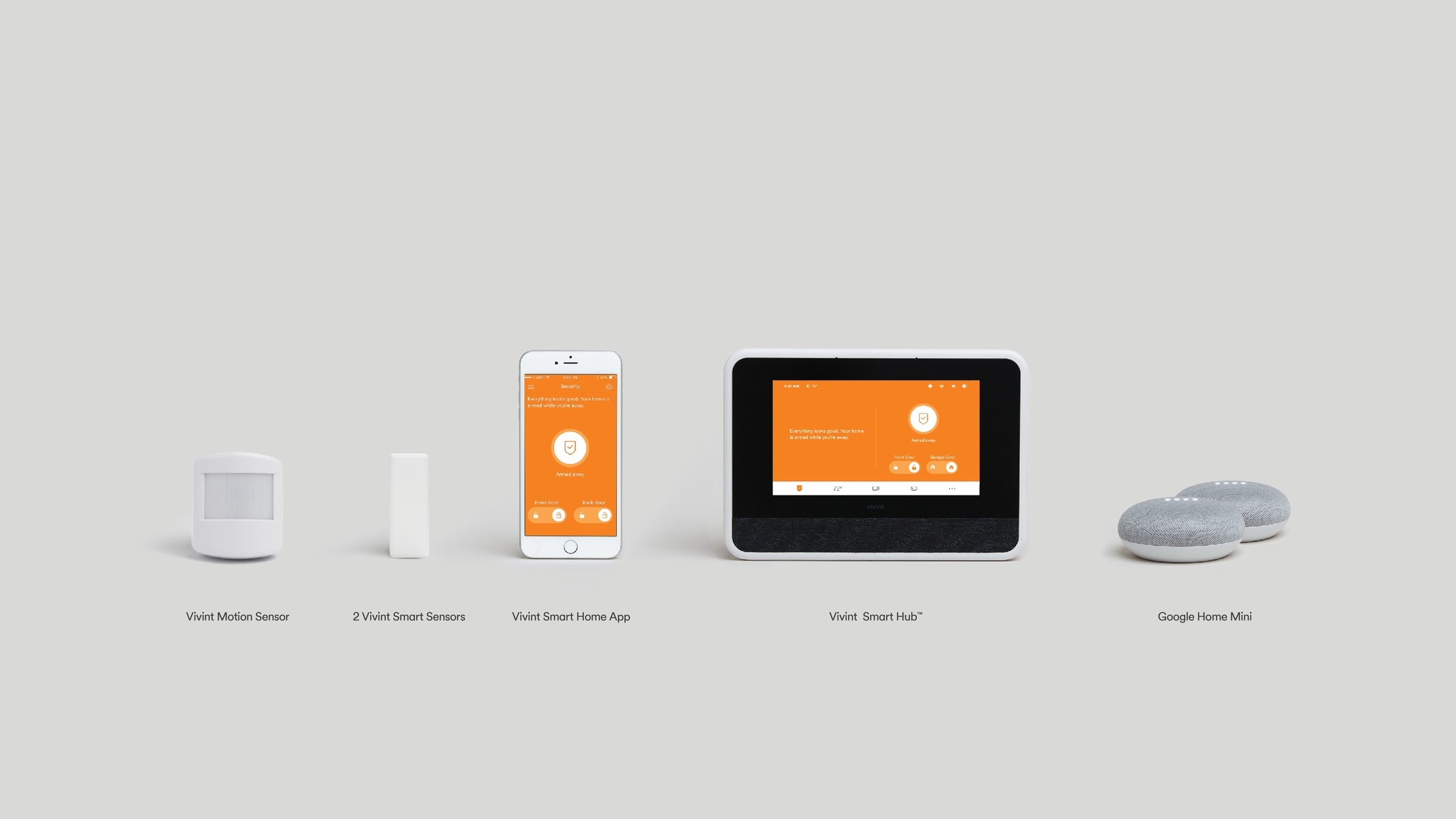Introduction
Welcome to our guide on how to calibrate the Simplisafe Smart Lock. The Simplisafe Smart Lock is a cutting-edge device that provides convenient and secure access to your home. However, like any smart device, the Smart Lock may require calibration to ensure optimal performance. This calibration process is essential as it allows the lock to accurately detect and respond to your commands.
Calibrating your Simplisafe Smart Lock is a relatively simple process that can be done through the Simplisafe app. In this guide, we will walk you through each step of the calibration process and provide valuable insights to help you fine-tune the settings for optimal functionality.
By calibrating your Smart Lock, you can ensure that it locks and unlocks smoothly, accurately detects authorized access attempts, and provides an added layer of security to your home. Whether you’re a new Simplisafe Smart Lock owner or you’ve had the device for some time, this guide will help you calibrate your lock effectively.
Before we dive into the calibration process, it’s essential to gather the necessary tools and materials. This will ensure that you have everything you need to complete the calibration smoothly and without any delays. Let’s take a look at what you’ll need in the next section.
Step 1: Gather the necessary tools and materials
Before you begin calibrating your Simplisafe Smart Lock, make sure you have the following tools and materials ready:
- A smartphone or tablet with the Simplisafe app installed
- Stable internet connection
- Access to your Simplisafe account
- The Simplisafe Smart Lock
- A Phillips-head screwdriver
- A clean cloth for wiping the Smart Lock
Having these tools and materials prepared will ensure a smooth and efficient calibration process. The smartphone or tablet with the Simplisafe app is crucial as it will be used to access the calibration settings and make any necessary adjustments.
A stable internet connection is necessary for the app to communicate with the Smart Lock and update its calibration settings. Make sure you are connected to a reliable Wi-Fi network or have a strong mobile data connection to avoid any interruptions during the calibration process.
Access to your Simplisafe account is vital as it allows you to authenticate and access the calibration settings specific to your Smart Lock. Ensure that you have your account login credentials handy, such as your username and password, to avoid any delays or login issues.
The Simplisafe Smart Lock itself is, of course, a crucial component for calibration. Ensure that the lock is securely installed on your door and that there are no obstructions or loose parts that may interfere with the calibration process.
Lastly, have a Phillips-head screwdriver on hand as you may need to remove the Smart Lock from the door or make minor adjustments during calibration. The clean cloth will come in handy for wiping any dust or fingerprints off the Smart Lock, ensuring optimal performance during calibration.
With all the necessary tools and materials gathered, you are now ready to proceed to the next step: preparing the Simplisafe Smart Lock for calibration.
Step 2: Prepare the Simplisafe Smart Lock for calibration
Before diving into the calibration process, it is important to properly prepare the Simplisafe Smart Lock. This step ensures that the lock is ready to be calibrated and will provide accurate results. Follow these instructions to prepare the Smart Lock for calibration:
- Ensure that the lock is properly installed on your door. Check for any loose screws or hinges and tighten them if necessary.
- Remove any debris or obstructions from the lock’s sensor area. Dust, dirt, or other objects can interfere with the lock’s calibration process, so make sure the sensor is clean and free from any obstacles.
- Wipe the Smart Lock with a clean cloth to remove any fingerprints or smudges. This helps ensure accurate readings during calibration and helps maintain the lock’s overall performance.
- Check the battery level of the Smart Lock. If the battery is running low, replace it with a fresh set. Calibration requires sufficient power to properly adjust and update the lock’s settings.
- Ensure that the door is fully closed and latched securely. The Smart Lock needs to detect the door’s position accurately during calibration, so make sure it is in the closed position.
By following these preparation steps, you ensure that the Simplisafe Smart Lock is in an optimal state to undergo calibration. Checking the installation, cleaning the lock, and verifying the battery level are all essential to obtaining accurate calibration results.
Once you have prepared the Smart Lock, you are ready to move on to the next step: accessing the calibration settings on the Simplisafe app. This is where the actual calibration process begins, and we will guide you through each step to ensure a successful calibration of your Smart Lock.
Step 3: Access the calibration settings on the Simplisafe app
Now that you have prepared the Simplisafe Smart Lock, it’s time to access the calibration settings through the Simplisafe app. Follow these steps to access the calibration settings:
- Open the Simplisafe app on your smartphone or tablet. Make sure you are logged in to your Simplisafe account.
- Tap on the Smart Lock device from the list of devices connected to your account. The app will display the lock’s status and various settings.
- Look for the “Calibration” or “Settings” tab in the app’s interface and select it. This will take you to the calibration settings for your Smart Lock.
- Within the calibration settings, you may find options to adjust the lock’s sensitivity, lock/unlock speed, and other related parameters. Explore these settings to understand the available customization options.
- Take note of the current settings before making any changes. This allows you to revert to the previous settings if necessary or if you want to compare the changes in performance after calibration.
By accessing the calibration settings on the Simplisafe app, you gain control over the Smart Lock’s performance parameters. These settings provide the flexibility to fine-tune the lock’s sensitivity, speed, and other aspects to suit your preferences and ensure optimal functionality.
Once you have accessed the calibration settings, you can proceed to the next step: beginning the calibration process. This is where you will actively adjust and customize the settings to calibrate the Smart Lock according to your specific requirements.
Step 4: Begin the calibration process
With the calibration settings accessed through the Simplisafe app, you are ready to begin the calibration process for your Simplisafe Smart Lock. Follow these steps to initiate the calibration:
- Start by selecting the “Calibration” or “Start Calibration” option within the calibration settings on the Simplisafe app.
- The app will guide you through a series of prompts and actions to calibrate the lock. Follow these instructions carefully to ensure accurate calibration.
- Depending on the specific lock model and app version, you may be asked to perform actions such as locking and unlocking the door, operating the keypad or lever, or adjusting sensitivity levels.
- Execute each action as instructed and wait for the app to acknowledge the completion before proceeding to the next step.
- During the calibration process, stay near the Smart Lock to provide immediate feedback on its performance. This will help you fine-tune the settings effectively.
It is important to carefully follow the instructions provided by the Simplisafe app during the calibration process. These instructions are designed to ensure accurate calibration and optimal performance of your Smart Lock. Pay attention to any prompts, confirmations, or adjustments required during each step.
By actively participating in the calibration process and executing the necessary actions, you are actively customizing the lock’s settings to align with your preferences and specific door characteristics.
Once you have completed the calibration process as guided by the app, you can proceed to the next step: fine-tuning the calibration for optimal performance. This step allows you to make further adjustments to ensure the Smart Lock operates smoothly and accurately.
Step 5: Fine-tune the calibration for optimal performance
After completing the initial calibration process, it’s time to fine-tune the settings of your Simplisafe Smart Lock for optimal performance. This step allows you to make further adjustments and refinements to ensure that the lock operates smoothly and accurately. Follow these steps to fine-tune the calibration:
- Review the lock’s performance after the initial calibration. Note any issues, such as delays in locking or unlocking, false alerts, or any other concerns.
- Access the calibration settings again through the Simplisafe app. Look for the specific settings that can be adjusted to address the identified issues or enhance the lock’s performance.
- Experiment with adjusting the sensitivity levels, lock/unlock speed, or any other relevant parameters available in the calibration settings. Make small increments or decrements to observe the impact on the lock’s performance.
- Test the lock after each adjustment and note any changes. Pay attention to whether the lock responds more accurately, locks and unlocks smoother, and eliminates any identified issues.
- Continue fine-tuning the calibration settings, testing, and evaluating the lock’s performance until you are satisfied with its operation. Be patient and persistent in making incremental adjustments.
Fine-tuning the calibration is an iterative process that requires patience and careful observation. By making small adjustments and testing the lock’s performance after each change, you can gradually optimize the lock’s settings to match your specific needs and door characteristics.
Keep in mind that the ideal calibration settings may vary depending on factors such as the type of door, weather conditions, and user preferences. Be proactive in experimenting with different configurations to find what works best for your situation.
Once you have fine-tuned the calibration and achieved the desired performance, you can move on to the next step: testing the calibrated Simplisafe Smart Lock to ensure everything is functioning properly.
Step 6: Test the calibrated Simplisafe Smart Lock
After completing the calibration and fine-tuning process, it’s crucial to test the calibrated Simplisafe Smart Lock to ensure that it is functioning properly. Testing the lock will help you verify if the adjustments made during calibration have resulted in the desired performance. Follow these steps to test the calibrated Smart Lock:
- Attempt to lock and unlock the door using various methods, such as the keypad, lever, or the Simplisafe app.
- Observe the lock’s response time and accuracy. Note if the lock responds promptly, smoothly, and consistently to your commands.
- Test the lock’s sensitivity by attempting to open the door without using an authorized method. See if the lock detects and prevents unauthorized access, providing an added layer of security.
- Repeat the testing process multiple times, paying attention to any inconsistencies, delays, or false alerts that may occur.
- If any issues or concerns arise during testing, return to the calibration settings on the Simplisafe app and make further adjustments based on the observed performance.
Testing the calibrated Simplisafe Smart Lock is crucial as it allows you to ensure that the lock is functioning as intended. By performing these tests, you can identify any discrepancies or areas that require further adjustment.
Remember that testing the lock multiple times under different scenarios will provide a more comprehensive assessment of its performance. Be thorough and meticulous during the testing process to gather accurate feedback and make any necessary changes.
If you encounter persistent issues or concerns during testing, refer to the troubleshooting section to address common calibration issues. These troubleshooting steps can help you identify and resolve any ongoing problems with your Simplisafe Smart Lock.
Once you are satisfied with the performance of your calibrated Smart Lock and have resolved any outstanding issues, you can consider the calibration process complete. However, it’s essential to periodically reevaluate and adjust the lock’s settings as needed to maintain optimal functionality.
Step 7: Troubleshooting common calibration issues
While calibrating your Simplisafe Smart Lock, you may encounter certain issues that affect its performance. Understanding and troubleshooting these common calibration issues can help you overcome any challenges and ensure optimal functionality. Follow these steps to troubleshoot common calibration issues:
- If the lock is not responding to commands or is unresponsive, try restarting the Simplisafe app and reconnecting to the Smart Lock. Sometimes, a simple reboot can resolve minor connectivity issues.
- If the lock is experiencing delays in locking or unlocking, check the battery level. A low battery can affect the lock’s performance. Replace the batteries with fresh ones if needed.
- If the lock is detecting false alerts or is overly sensitive, consider adjusting the sensitivity settings in the calibration menu. Decreasing the sensitivity level can help minimize false alarms.
- If the lock is not accurately detecting authorized access attempts, ensure that the door is properly aligned and secured. Ensure that there are no obstructions or misalignments that may affect the lock’s performance.
- If the smart lock is not responding consistently to commands from the Simplisafe app, check your internet connection. A stable and reliable internet connection is essential for proper communication between the app and the lock.
If these troubleshooting steps do not resolve the calibration issues, refer to the Simplisafe support documentation or reach out to their customer support for further assistance. They have trained professionals who can help diagnose and resolve any persistent issues with your Smart Lock.
Remember that calibration issues can vary depending on factors such as the specific Smart Lock model, the app version, and environmental conditions. It may take a bit of trial and error to find the optimal calibration settings and address any issues that arise.
By troubleshooting common calibration issues and seeking assistance when needed, you can ensure that your Simplisafe Smart Lock operates smoothly, providing reliable and secure access to your home.
Conclusion
Calibrating your Simplisafe Smart Lock is a crucial step in ensuring its optimal performance and functionality. By following the steps outlined in this guide, you can confidently navigate through the calibration process, fine-tune the settings, and troubleshoot any common issues that may arise.
Gathering the necessary tools and materials, preparing the Smart Lock, accessing the calibration settings on the Simplisafe app, and initiating the calibration process are all important steps to take. By actively participating in the calibration and fine-tuning process, you can customize the lock’s settings to match your preferences and specific door characteristics.
Testing the calibrated Smart Lock is essential to verify its performance. By thoroughly testing the lock’s response time, accuracy, and sensitivity, you can ensure that it functions properly and provides the necessary security for your home.
In the event of any calibration issues, troubleshooting common problems such as unresponsiveness, delays, false alerts, or connectivity issues can help address these concerns. If further assistance is required, reaching out to Simplisafe’s customer support will provide the necessary guidance.
Remember, the calibration process may require some trial and error to find the ideal settings for your specific needs. Be patient and persistent in fine-tuning the lock to achieve the best performance.
By calibrating your Simplisafe Smart Lock, you can enhance the security and convenience it offers, providing peace of mind and confidence in controlling access to your home. Enjoy the benefits of a seamlessly functioning smart lock that safeguard your home with ease.







